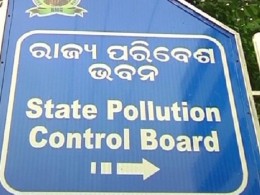Bhubaneswar: In a bid to attract more investments, Chief Secretary Asit Tripathy Thursday directed the State Pollution Control Board (SPCB) to set national level benchmarks in delivery of its services to the industries.
Presiding over the board meeting held in digital mode, Tripathy asked the Board to come up with definite action plan for setting national benchmark in hassle-free compliance through simplification of the processes and office automation.
Since Odisha is rich in mineral resources, the state also needs to be proportionately industrialised. Process reengineering will help creation of more employment opportunities through facilitation of business environment, he said.
He set transformational goals for SPCB to reduce the timeline for delivery of public services and reverse the increasing trend of air pollution by guiding the industries to adopt latest production technology and containment measures.
The Chief Secretary directed the pollution board officials to simplify and shorten the application forms for availing no objection certificates (NOC) under various norms. He instructed the board to reduce the file processing and disposal times by adopting office automation system.
Tripathy further asked the officials to reduce the time period specified for delivery of different public services under SPCB. The board would adopt self attestation mode by eliminating physical contact with the application.
SPCB Member Secretary K Murugesan said that the automation system should be linked with regional offices and central laboratory to reduce the time of receiving reports from field officers.
The member secretary was asked to have weekly monitoring of the process simplification, reengineering and office automation. He directed the staffers to accomplish major part of the task within a month.
It was decided to establish continuous ambient air quality monitoring stations (CAAQMS) in air pollution-prone cities. Such systems will be set up at Cuttack, Balasore, Keonjhar, Sundargarh, Mayurbhanj, Angul and Bhubaneswar. At present, two CAAQMS are operating at Talcher and Brajrajnagar.
The proposal regarding development of geo-database for environmental mapping was approved in the meeting. It would be a web-based application for all pollution-prone areas of Odisha.
The meeting also decided to develop a web portal containing updated data about air and water quality in different areas of the state for public information and use.
